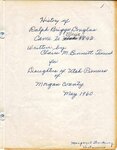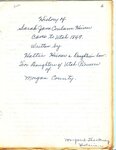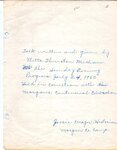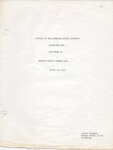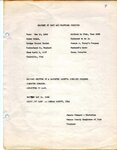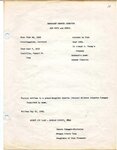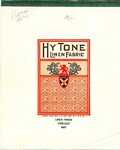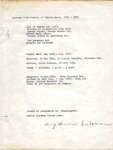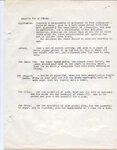| Title |
012_Pioneer Histories (DUP Book 9) |
| Contributors |
Daughters of Utah Pioneers, Morgan County |
| Description |
In the early part of the 1900s Daughters of Utah Pioneers historians interviewed pioneers and their children and wrote or gathered the histories. |
| Biographical/Historical Note |
This book contains Morgan County histories and documents that were shared in meetings of the Daughters of Utah Pioneers in the 1950s. Many of these histories are available because of Mary Chadwick's efforts to interview pioneers or their children circa 1920-1930. |
| Subject |
Morgan County (Utah)--History; Mormon pioneers |
| Digital Publisher |
Stewart Library, Weber State University, Ogden, Utah, USA |
| Date Original |
1960 |
| Date |
1960 |
| Date Digital |
2016 |
| Temporal Coverage |
1840; 1841; 1842; 1843; 1844; 1845; 1846; 1847; 1848; 1849; 1850; 1851; 1852; 1853; 1854; 1855; 1856; 1857; 1858; 1859; 1860; 1861; 1862; 1863; 1864; 1865; 1866; 1867; 1868; 1869; 1870; 1871; 1872; 1873; 1874; 1875; 1876; 1877; 1878; 1879; 1880; 1881; 1882; 1883; 1884; 1885; 1886; 1887; 1888; 1889; 1890; 1891; 1892; 1893; 1894; 1895; 1896; 1897; 1898; 1899; 1900 |
| Item Size |
9.5x11 inches |
| Medium |
histories |
| Item Description |
2-ring binder. This book consists of 70 pages, typewritten or handwritten. Some of the pages have rounded corners, others are standard 8.5 in. x 11 in. rectangle sheets. |
| Spatial Coverage |
Morgan County, Utah, United States, http://sws.geonames.org/5778525/ |
| Type |
Text |
| Conversion Specifications |
JPG images were scanned with a Kodak PS50 scanner. Handwritten transcription by Morgan County Daughters of Utah Pioneers; typed transcription by Alexandra Park using ABBYY Fine Reader. PDF files were created for general use. |
| Language |
eng |
| Rights |
Materials may be used for non-profit and educational purposes; please credit Morgan County Daughters of Utah Pioneers, Morgan, Utah. |
| Source |
Daughters of Utah Pioneers, Morgan County |
| Format |
application/pdf |
| ARK |
ark:/87278/s6s0nwfc |
| Setname |
wsu_mdupc |
| ID |
47851 |
| Reference URL |
https://digital.weber.edu/ark:/87278/s6s0nwfc |
| Title |
MECHAM, Bette. Morgan, Utah Centennial Talk, July 14, 1960 |
| Creator |
Mecham, Bette Thurston |
| Contributors |
Creager, Jessie, DUP Historian |
| Description |
This collection of Morgan County, Utah histories and documents were read in meetings of the Morgan County Daughters of Utah Pioneers during the late 1950s and compiled by the D.U.P. Historian. Many of these histories were a result of Mary H. Chadwick's efforts to interview pioneers of Morgan Valley and their children circa 1930. |
| Biographical/Historical Note |
This talk was given at the Morgan County 24th of July Sunday Evening program held in connection with Morgan's 1960 Centennial Celebration. |
| Subject |
Morgan County (Utah)--History; Mormon pioneers |
| Date Original |
1960 |
| Date |
1960 |
| Temporal Coverage |
1960 |
| Type |
Text |
| Source |
Bette Mecham's talk notes |
| Format |
application/pdf |
| Setname |
wsu_mdupc |
| ID |
48507 |
| Reference URL |
https://digital.weber.edu/ark:/87278/s6s0nwfc/48507 |


